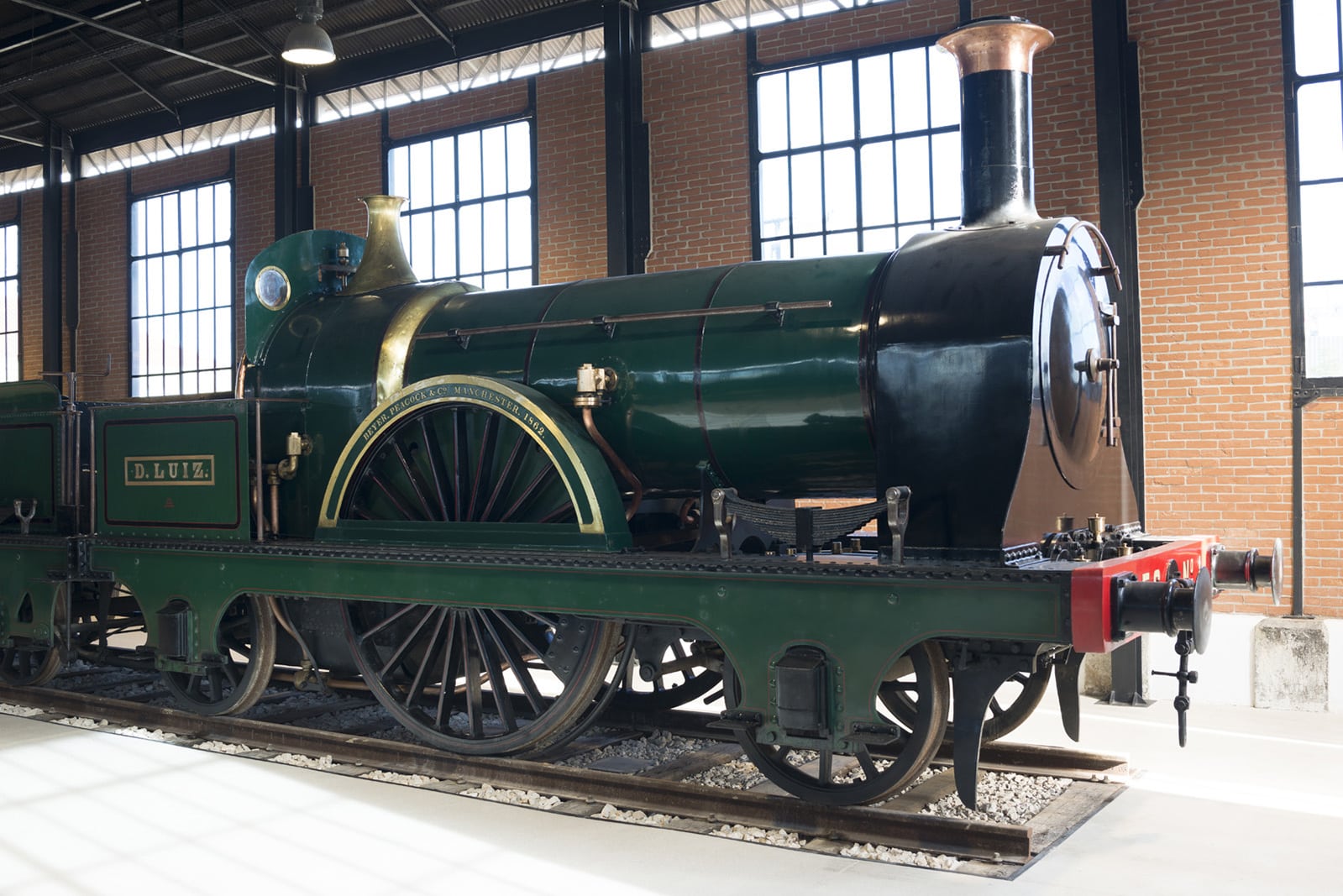When I was ten years old, I used to catch the train, by myself, from Cascais or Estoril to Cais do Sodré in Lisbon, where I attended school. It was a bumpy exciting ride along the coastline with amazing views of the Atlantic Ocean.
In my twenties I commuted daily from Kent in the UK to the city of London. It was a horrible trip where I often had to stand the entire journey due to overcrowding. However, in the last twenty-five years, apart from one bone-shaking scary trip from Estômbar to Lagos, the only train journeys I now make are to Lisbon and the trip is comfortable and easy.
Portugal’s 100% state-owned railway system, Comboios de Portugal (CP) – ‘Trains of Portugal’ – covers almost all the country. In 2023, over 173.2 million passengers travelled on their four types of train services. The 220kms per hour ‘Alfa Pendular’ actually tilts going round bends to maintain its speed. The slightly slower ‘Intercity’ trains are comfortable, while the ‘Regional’ trains connect smaller towns and regions. Finally, there are the commuters’ ‘Urban’ trains in the metropolis. CP cooperates with cultural events, offering services to festivals and pilgrimages, and there are some beautiful scenic train services through the Douro Line with its terraced vineyards and river and the coastal views of the Minho and Algarve Lines.
However, did you know that Portugal’s railway was built with the support of British engineers and technology?
Photo: Museu Nacional Ferroviário
Englishman Hardy Hislop, director of Portugal’s ‘Companhia Central Peninsular dos Caminhos de Ferro’, was contracted on May 13, 1853, to build a railway from Lisbon to the Spanish border. Just fifteen days later, Queen D. Maria II inaugurated the work on the first stretch from Lisbon to Carregado in Western Portugal, which later expanded to become the important Lisbon-Porto line.
Then, on December 15, 1855, the minister of public works, Fontes Pereira de Melo, rescinded Hislop’s contract, signing a new one with Britain’s Shaw & Waring Brothers. Despite some conflicts with the government over payments, contractual obligations and imported equipment which led, at one point, to government armed guards forcibly seizing rolling stock, the first passenger train journey took place on October 26, 1856.
The maiden journey’s primary locomotive was named D. Luiz, after the King’s brother. It was built in Manchester in 1855 by Beyer Peacock & Company Limited, a general engineering company and railway locomotive manufacturer founded in 1854.
Two locomotives and fourteen carriages left Lisbon station at 11am with the royal family and various dignitaries, although I did read one unconfirmed report that King D. Pedro V arrived late and missed the train! Other guests travelled on a second train that left Santa Apolónia station at 11.45am for the 37km journey which took forty minutes.
In Carregado, there was a huge celebration party. At 4.30pm, the royal party began their return journey, but the locomotive broke down, leaving the spare only able to pull six carriages, thus stranding many passengers in Sacavém until the train could return to collect them.
The D. Luiz locomotive was used until 1921. Then, it was consigned to the scrapyard where amazingly it remained until it was restored in 1956 and can now be seen in the Railway Museum, in Entroncamento, which has over 160 years of railway memorabilia, locomotives and carriages.

Photo: Museu Nacional Ferroviário
Early train carriages were basic, with few safety features. Ventilation was ineffective and rudimentary heating was provided by coal and wood stoves. With no shock absorbing systems, the rides were rough and noisy. However, it was not long before international trains provided first class luxurious carriages, allowing for a new travel era.
In the 1850s, the train signalling methods depended on human skill for simple, effective communication to ensure safety and coordination on the tracks. Thus human error was a significant risk. One bell pull for stop, two for go, three for back up. Whistles were used for everything from braking to cattle alarms. Red flags and lantern swings added to the mix.
However, the railwaymen arm signals led to mockery in the UK by a journalist writing in 1888 in the Sportsman Newspaper about American railway signals that the British took on, “not because we feel much concern about them but because as a recipe for turning a man into an imbecile they could not be equalled.” These included sweeping hands for “go ahead,” over-the-head for “back slowly,” and downward arms for “stop.” With Portugal’s railway system heavily influenced by British expertise, it is likely that similar signals were used here.
The railway system expanded rapidly, playing a crucial role in developing Portugal’s infrastructures and industrialization. It promoted social mobility and regional development. By 1861, the railway line had reached Badajoz on the border, with Spain helping to integrate the Portuguese economy with the broader European market. Next came the much-needed link between Lisbon and Porto. In those days, a trip from Lisbon to Porto using animal-pulled forms of transport would take five days, and now, in just a few hours, Portugal’s two main cities were easily linked.
The beginning of the end of the steam train era came in 1948 with the arrival of diesel-run locomotives, and electrification of the system began in 1964.
The world’s first locomotive to run on a public railway line specifically built for both passengers and freight was George Stephenson’s “Locomotion No. 1” on September 27, 1825, in northeast England. Portugal was consequently behind in developing its railway systems.
At the time, the horse and carriage was the fastest land transport averaging a speed of 13-19 kms an hour, depending on the terrain, type of carriage and the horses’ endurance. In comparison, a steam train travelled twice as fast.
Therefore, when trains first appeared, people were both excited and nervous of these new steam-breathing monsters. Author Charles Dickens in his 1848 novel ‘Dombey and Son’ aptly describes how I feel, even today, going on a railway journey…
“Away, with a shriek, and a roar, and a rattle, from the town, burrowing among the dwellings of men and making streets hum, flashing out into the meadows for a moment, mining in through the damp earth, booming on in darkness and heavy air, bursting out again into the sunny day so bright and wide… and no trace to leave behind but dust and vapour… it rolls and roars, fierce and rapid, smooth and certain… glimpses of cottage homes, of houses, mansions and rich estates… that look small and insignificant as they are left behind…”
So now you know!
By Isobel Costa
|| features@algarveresident.com
Isobel Costa works full time and lives on a farm with a variety of pet animals! In her spare time, she enjoys photography, researching and writing.

























